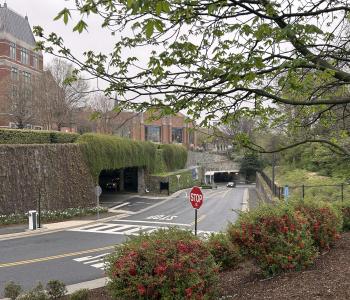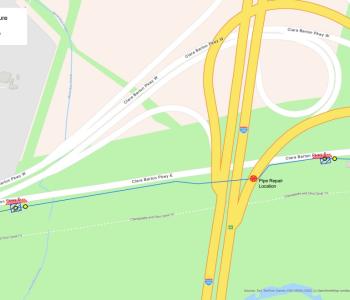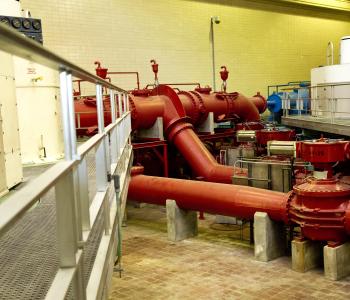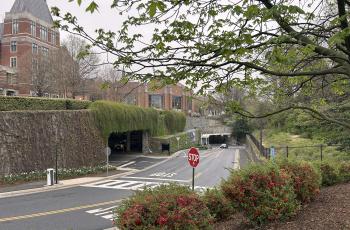DC Water names giant tunnel boring machine to be used on largest construction project in the District since Metro
Today, the District of Columbia Water and Sewer Authority (DC Water) named its massive tunnel boring machine (TBM) while Cardinal Donald Wuerl, the Catholic archbishop of Washington, provided a blessing to those who will work on it. Soon, the behemoth will be lowered underground on a mission to tunnel two and a half miles along the Potomac and under the Anacostia River. The machine, with a 26-diameter cutterhead and measuring more than 350 feet long when assembled, is part of DC Waters Clean Rivers Project to significantly reduce combined sewer overflows in the District for improved water quality.
Cardinal Wuerl, Ken Kopocis from the U.S. EPA Office of Water, DC Water Board Chairman and City Administrator Allen Y. Lew and DC Water General Manager George S. Hawkins, participated in todays event that culminated with a christening ceremony with a bottle of DC tap water and the unveiling of the tunnel boring machines name.
TBMs are typically named for important women, much as boats are in the nautical world. This TBM was named Nannie for Nannie Helen Burroughs, a prominent 20th century African-American educator and civil rights activist. A resident of Washington, D.C., she founded the National Training School for Women and Girls to provide academic, religious and vocational classes for African American girls and young women.
Nannie joins Lady Bird, (DC Waters first 26-diameter tunnel boring machine) in tunneling segments that will join together for part of the 13.1 mile-long Anacostia River Tunnel to alleviate combined sewer overflows to the Anacostia River.
Commenting on todays announcement, DC Water Board Chairman and City Administrator Allen Lew said, When complete, this project will reduce combined sewer overflows to the Anacostia by 98 percent, which will be a tremendous step forward for the river and for the communities along both banks.
Nannie Helen Burroughs paved the way for young African American women and girls to achieve greatness despite the barriers they faced in the early twentieth century, said DC Water General Manager George S. Hawkins. The Anacostia River is the most impaired waterway in the District. Our Nannie will be making way for a healthier Anacostia River, a more prosperous waterfront and a boost for the communities east of the Anacostia.
Invoking the intercession of Saint Barbara, the patron saint of miners, Cardinal Wuerl prayed for the protection of the workers and blessed the tunnel boring machine. Sprinkling it with Holy Water, Cardinal Wuerl prayed that this tunnel boring machine may be used to help improve the lives of all people, especially in this metropolitan area. Through the work of our hands and the help of technology we cooperate with the Creator to improve the earth as the dwelling place of the human family, he said during the blessing ceremony.
As in many older cities, about one-third of the District has a combined sewer system. A combined sewer overflow (or CSO) occurs during heavy rain when the mixture of sewage and stormwater cannot fit in the sewer pipes and overflows to the nearest water body. This was the engineering design in the late 1800s and was preferable to the combined sewage backing up in homes and businesses and on the streets. Since the early 1900s, only sewer systems with separate pipes for sewage and stormwater have been installed in the District. CSOs contain bacteria and trash that can be harmful to waterways and the aquatic life they support.
DC Waters plan to significantly reduce CSOs to the Anacostia River is to build massive underground tunnels that will store the combined sewage and runoff during intense rainstorms and then release it when the system has the capacity to treat it. Similar CSO tunnels exist in Chicago, Indianapolis, Atlanta and many other cities. More than 700 cities nationwide have combined sewer systems.
For more information, and specifications on the TBM and its route, please visit http://www.dcwater.com/news/presskits/nannie.cfm







